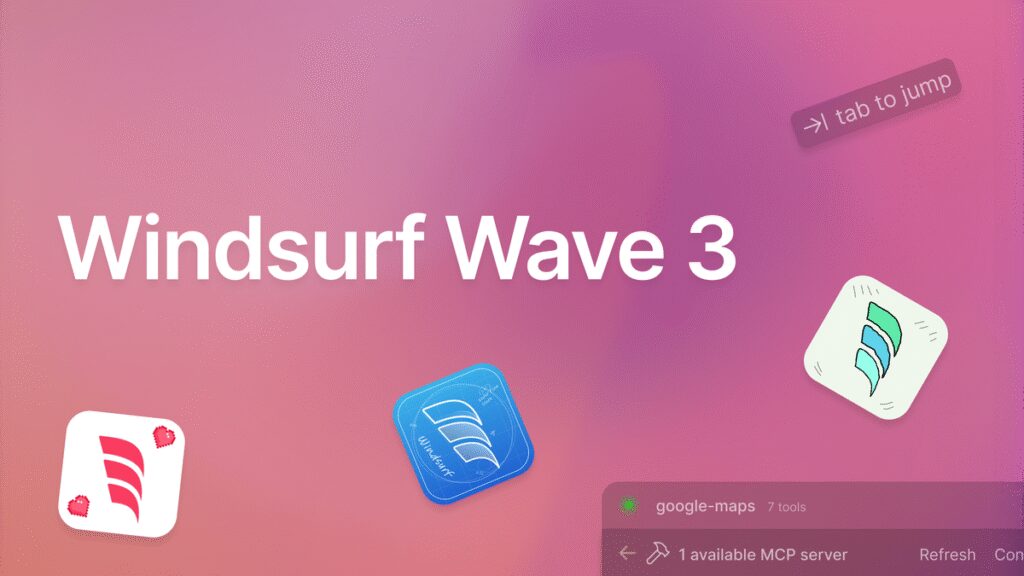Codeium has recently rolled out an exciting update to its popular AI-powered Windsurf Editor, aptly named “Windsurf Wave 3.” Released on February 13, 2025, this latest version aims to further enhance the functionality and ease of use of the editor, particularly for developers and teams that are increasingly embedding AI into their workflows. As small and medium-sized businesses (SMBs) strive for operational efficiency and competitive advantage, understanding how to effectively leverage these advancements can prove invaluable.
One of the standout features of this update is the Model Context Protocol (MCP) support integrated into the Windsurf Editor. MCP allows businesses to connect seamlessly to external data sources via standardized servers. This capability enables companies to utilize structured data directly within their projects, optimizing workflows by making information readily accessible without cumbersome searches. For SMBs, this could translate to significant time savings when developing applications or coding, especially in scenarios where data from multiple sources is required. Being able to configure these integrations in the Windsurf settings means that teams can tailor their data accessibility according to their specific needs, streamlining development processes and enhancing the decision-making framework.
The introduction of the “Tab-to-Jump” feature is another significant enhancement that caters directly to productivity. By allowing users to navigate suggested code positions using the “Tab” key, developers can work more fluidly and intuitively. This secondary layer of autocomplete functionality, available not only to paid users but also to individuals, highlights the focus on universal usability. This is particularly beneficial for teams under tight deadlines or those who are continually iterating on projects. The capability to access unlimited suggestions can effectively reduce the time spent debugging and refactoring, leading to faster release cycles and improved software quality.
Turbo Mode also heralds a new era of efficiency for developers. With the ability for Cascade—Windsurf’s core AI workflow system—to autonomously execute terminal commands without user approval, businesses can now automate repetitive tasks inherent in the development process. This not only minimizes the risk of human error but also allows developers to redirect their focus towards more value-added work like feature development or strategic planning. For SMBs, this means that by integrating such automation strategies, they can expect to see a clear return on investment via increased output and better alignment of resource utilization.
Additionally, the new drag-and-drop images feature enables smoother workflows, particularly for teams involved in website development and design. This functionality streamlines processes that conventionally involve multiple tools and platforms, which can often lead to communication breakdowns and inefficiencies. By allowing images to be incorporated directly into the editor, businesses can foster a more cohesive workflow that integrates design and development, further enhancing team collaboration and reducing project turnaround times.
Personalization options, such as the ability for paid users on macOS to customize their application icons, also speak to the growing trend of tailoring tools to individual preferences. While this feature may seem minor, giving teams the option to personalize their working environment can lead to increased job satisfaction and enhance overall productivity. The psychology of engagement in the workplace is important; when employees feel more comfortable and connected to their tools, they are often more motivated and efficient in their work.
As Codeium continues to enhance its Windsurf platform, the focus on integrating new models and allowing early access for testers through “Windsurf Next” supports a culture of innovation and responsiveness to user feedback. This iterative development process is vital in a rapidly changing technological landscape, ensuring that users are not left behind. By adopting such forward-thinking tools, SMBs can build a framework that not only improves current operations but also prepares them for future growth and technological advancements.
In conclusion, the latest features and improvements introduced in Windsurf Wave 3 present a compelling case for SMBs looking to integrate AI-driven workflows into their operations. By embracing these tools, companies can optimize tasks, improve decision-making processes, and ultimately enhance productivity. Through strategic implementation, SMBs can unlock the full potential of their workforce and leverage technological advancements to stay competitive in their respective markets.
FlowMind AI Insight: In an era where operational efficiency is king, integrating AI into daily workflows is not just an option; it is a necessity for SMBs aiming to thrive. By harnessing the power of automation and data integration, businesses can pave the way for improved performance and sustained growth.
Original article: Read here
2025-02-14 08:00:00

